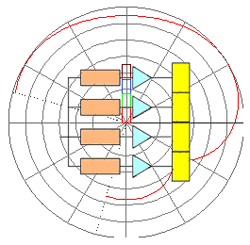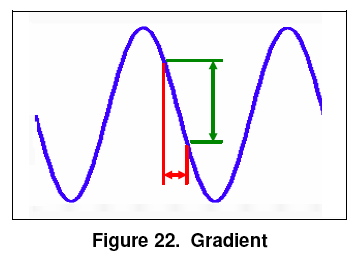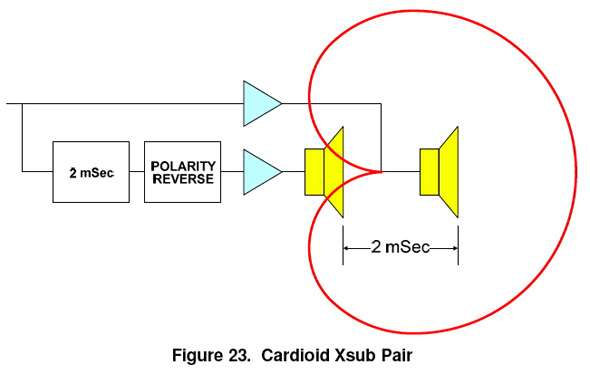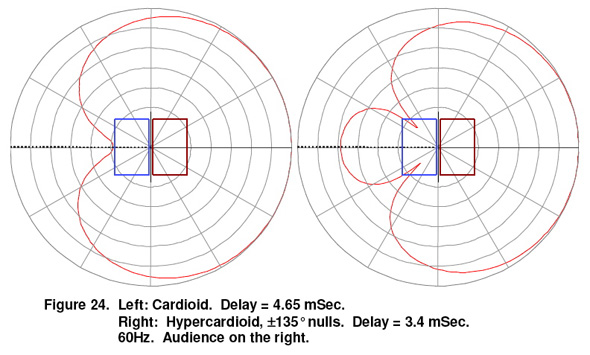
8. Gradient Arrays
A gradient array is an arrangement of loudspeakers driven at different amplitudes and phases in such a way as to cancel sound radiation in unwanted directions.
Gradient arrays only work when their dimensions are small with respect to wavelength. They are the opposite of beamformed and endfire arrays, which must be large in order to work.
The reason for this is that gradient loudspeakers work by controlling pressure differences between the different parts of the sound wave, and must therefore be small enough to work “within” the wave.
Gradient loudspeakers are the loudspeaker counterparts of ordinary directional microphones, which work by picking up pressure differences between different parts of the sound wave.
The gradient technique is the only practical way to implement subbass pattern control with small arrays.
When set up carefully and correctly, gradient arrays can provide a range of useful patterns that will give significantly better bass coverage than could be achieved using simple arrays of comparable size.
8.1. Example
Figure 23 shows a pair of EV Xsub subwoofers in a basic gradient configuration. Each loudspeaker box has its own drive.
The boxes are positioned back to back, 4” (10cm) apart. The rear box is driven in reverse polarity and is delayed by 4.65 mSec. The resulting array has a cardioid directional pattern.
Although in this example the loudspeakers are mounted back to back, it need not always be so. As long as the there is enough space between front and rear cabinets to allow the rear loudspeaker’s sound to emerge, the rear cabinet can be mounted facing forward or backward.
The gap should be at least 18 inches (50cm). In all cases, the delay value must always be adjusted to match the spacing between loudspeaker cones.
If each Xsub shown in Figure 23 were a column of Xsubs instead of a single Xsub, we would have a gradient line array. Gradient line arrays have useful properties and will be discussed further below.



